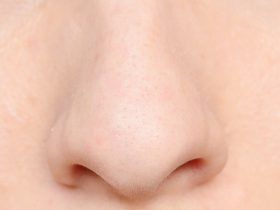Is dupilumab a good option for treating allergic fungal rhinosinusitis (AFRS)? At the recent American Rhinologic Society Meeting in Philadelphia (Sep 9-10, 2022), a team from the St. Paul’s Sinus Centre of the University of British Columbia presented real-world evidence in the poster “Dupilumab in allergic fungal rhinosinusitis: A tertiary care center experience.” Chronic rhinosinusitis (CRS) is a common inflammatory disease that causes nasal discharge, swollen sinuses, and pain. In the United States, 12% of people have CRS.
Allergic fungal rhinosinusitis (AFRS) is a distinct subtype that accounts for 5-10% of all CRS. It is characterized by high levels of IgE in the blood, which are antibodies made by the immune system to overreact to allergens. Another sign of AFRS is fungal mucin full of eosinophils, the primary white blood cells that cause allergic inflammation.
To treat AFRS, you need advanced ways to get air into the sinus, extensive surgery to remove the eosinophilic mucin, and medical therapy, such as corticosteroids and antifungal agents. However, AFRS patients are always at a higher risk of recurrence, even after aggressive medical and surgical treatment. Dupilumab is the first FDA-approved biologic therapy for CRS with uncontrolled symptoms, but clinical trials have not involved AFRS patients. And hence, subsequent real-world evidence is anticipated.
This study looked back at all patients who received dupilumab (300 mg every two weeks) at St. Paul’s Sinus Centre between October 2020 and March 2022. Patience with nasal polyps, evidence of fungal mucin, elevated IgE, and compatible tomographic fundings were classified as AFRS. An independent rhinologist reviewed each record, and disagreements were resolved through consensus. All eligible patients have baseline records three months before starting therapy. They should be followed up one to three, four to seven, and eight to twelve months after starting dupilumab. All eligible patients have failed maximum medical and surgical therapy.
Seven male and four female patients at the median age of 55 were finally included in the cohort. The researchers used nasal polyp score (NPS) and the 22-item Sinonasal Outcome Test (SNOT-22) score to assess the treatment response to dupilumab. All eleven patients showed some improvement in their symptoms or signs, as measured by SNOT-22 or NPS. Reduced IgE levels were observed in eight patients with baseline and 8 to 12-month records, whereas eosinophil responses vary between patients. Only one case of arthralgia and one case of conjunctivitis occurred as adverse events, both of which were mild and self-limiting. One year after taking dupilumab, no patient needed to have surgery or take oral steroids again, which is in line with the score improvement above.
“With reduced levels of serum IgE and fungal mucin, our results suggest that dupilumab is an excellent way to treat AFRS.
However, with variable responses in eosinophils, it is possible that not every patient will benefit from dupilumab,” the speaker, Juan Carlos Hernaiz, concluded, “Our findings, which are based on a retrospective study of 11 patients in one clinic, should be confirmed by larger prospective studies on this topic.”




